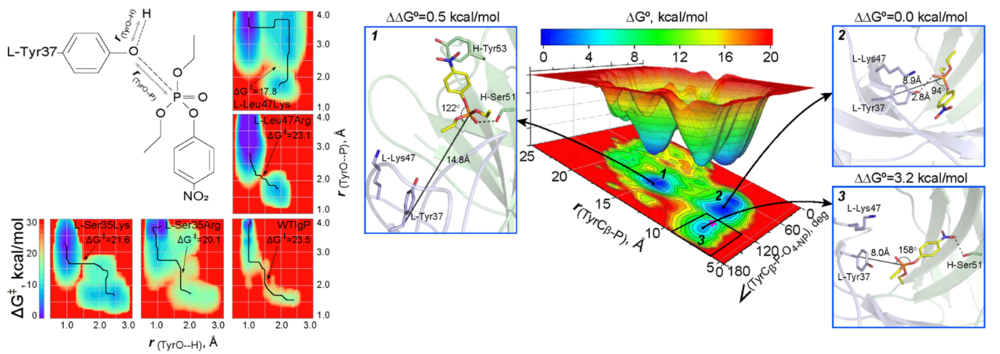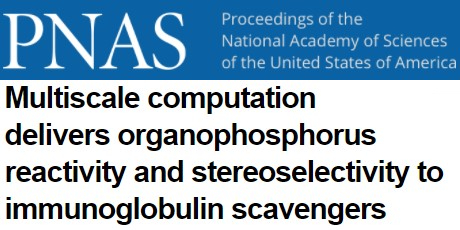Press-room / news / Science news /
Multiscale computation delivers organophosphorus reactivity and stereoselectivity to immunoglobulin scavengers
The scientists from the Laboratory of biocatalysis, the Laboratory of proteolytic enzyme chemistry, the Laboratory of bioinformatics approaches in combinatorial chemistry and biology and the Laboratory of hormonal regulation proteins, together with colleagues from EMBL-Hamburg, Moscow State University. M.V. Lomonosov, the Sheffield Institute and the Scripps Research Institute have developed a universal algorithm that makes it possible to create biological antidotes based on biocatalysts, directionally increasing their reactivity, and to predict stereoselectivity.
The use of artificial libraries of antibody genes has an important advantage - the ability to select binding and catalytic antibodies to highly toxic compounds, which is impossible when using classical methods of animal immunization. On the other hand, the use of existing screening systems for combinatorial antibody libraries is limited by selection methods, which narrows the size of the library, and also does not allow for antibody “maturation” characteristic of living systems. In this work, the previously developed QM / MM method of "maturation" of catalytic antibodies is significantly improved (Smirnov et al. Science Advances 2016). We developed an algorithm that used a combination of DFT-b and Funnel Metadynamics methods. This made it possible to find an antibody variant in which a single amino acid substitution L-Leu47Lys leads to a 340-fold increase in reactivity towards the organophosphorus pesticide paraoxon. We determined the mechanism and described in detail the pathway of the reaction of formation of a covalent bond between the reactive residue Tyr37 of the antibody and paraoxon. The developed algorithm not only allows one to determine the energy parameters of the reaction with high accuracy, but also to predict the stereoselectivity of catalytic antibodies to a given chiral substrate.
The algorithms used here offer prospects for tailored-design of highly-evolved, genetically-encoded organophosphorus scavengers and for broader functionalities of members of the immunoglobulin superfamily, including cell surface-exposed receptors.
The work was published in the journal Proceedings of the National Academy of Sciences.

september 10, 2020




